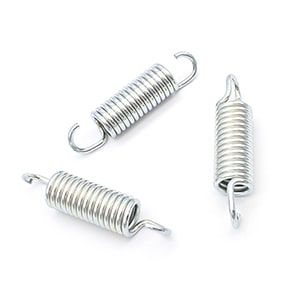Get unique, complex parts easily. No matter your requirements, Chaoyi Spring creates hard-to-produce coil springs and wire forms.
Let us help you create the custom wire form you need, from S-hooks and J-hooks to utility hooks and more.
We work closely with customers across a wide range of industries, helping them design and manufacture made-to-order parts.
Why choose Chaoyi Spring? We prioritize customer-focused collaboration, modern equipment and the latest technology to make your parts per print.
Find the information and guidance you need, from measuring a spring to learning about materials, placing an order and much more.
Compression springs, ubiquitous in countless mechanical systems, play a crucial role in storing and releasing mechanical energy. Among the various types, helical compression springs stand out due to their simple


Compression springs, ubiquitous in countless mechanical systems, play a crucial role in storing and releasing mechanical energy. Among the various types, helical compression springs stand out due to their simple yet effective design. These springs, formed by coiling a wire into a helix, are known for their ability to withstand substantial compressive forces while offering flexibility and resilience. This article delves into the intricacies of helical compression springs, exploring their design, applications, and why they are indispensable components in numerous industries.

At their core, helical compression springs are designed to absorb and store energy when compressed. This energy is then released upon the removal of the compression force, allowing the spring to return to its original length. This fundamental principle underlies their wide range of applications, from simple mechanical systems to complex industrial machinery.
The geometry of a helical compression spring dictates its performance. Key parameters include:
The intricate relationship between these parameters dictates the spring's spring rate, which is a measure of its stiffness. A higher spring rate indicates a greater force required to compress the spring a given distance. Careful consideration of these design variables ensures that the spring meets the specific requirements of the intended application.
The versatility of helical compression springs makes them indispensable across numerous industries. Some notable applications include:
Their widespread use stems from their ability to perform vital tasks efficiently and reliably. From dampening vibrations to providing tension and returning objects to their original positions, helical compression springs are instrumental in maintaining optimal performance across various applications.
The material chosen for a helical compression spring is crucial in determining its properties and performance. Common choices include:
The choice of material depends on the specific requirements of the application, including the desired strength, corrosion resistance, and operating temperature. Careful consideration of these factors ensures that the spring performs optimally and reliably over its intended lifespan.
The enduring popularity of helical compression springs is rooted in their numerous advantages:
These benefits have cemented helical compression springs as a vital component in countless systems, ensuring smooth operation, reliable performance, and optimal functionality.
The performance of a helical compression spring hinges on its quality and precision. Variations in manufacturing can significantly affect the spring's characteristics, leading to inconsistent performance or premature failure. Therefore, it is paramount to choose a reputable manufacturer that adheres to stringent quality control standards.
Modern manufacturing processes, such as computer-aided design (CAD) and numerical control (NC) machining, enable the production of highly precise springs that meet demanding tolerances. These technologies ensure consistent performance and reliability, making helical compression springs an integral part of many critical systems.
Helical compression springs, though seemingly simple, are fundamental components in countless mechanical systems. Their ability to store and release energy efficiently, combined with their versatility, reliability, and durability, makes them indispensable in a wide array of applications. From automotive to aerospace, consumer products to medical devices, these springs play a vital role in ensuring smooth operation, optimal performance, and a seamless user experience.
Understanding the design, applications, and advantages of helical compression springs is crucial for engineers, designers, and anyone involved in developing or maintaining mechanical systems. By carefully selecting materials, employing precise manufacturing techniques, and recognizing the importance of quality control, we can ensure that these springs continue to play their vital role in driving technological innovation and shaping the world around us.
As technology continues to advance, helical compression springs remain essential components in mechanical systems. Their simplicity, versatility, and reliability make them crucial for engineers and designers seeking to create efficient and durable products. As we move forward, the continued development of materials, manufacturing techniques, and design optimization will further enhance the capabilities of these indispensable springs, paving the way for even more innovative and groundbreaking applications in the years to come.
Browse some of the custom wire forms and springs that we manufacture. Don’t see what you need? We specialize in made-to-order products that meet your application requirements.
Visit Our GalleryNeed a custom wire form or coil spring? We make it work. Fill out the contact form and a representative will respond within 1 business day. If you have a PDF or CAD file, you can submit to request a quote.